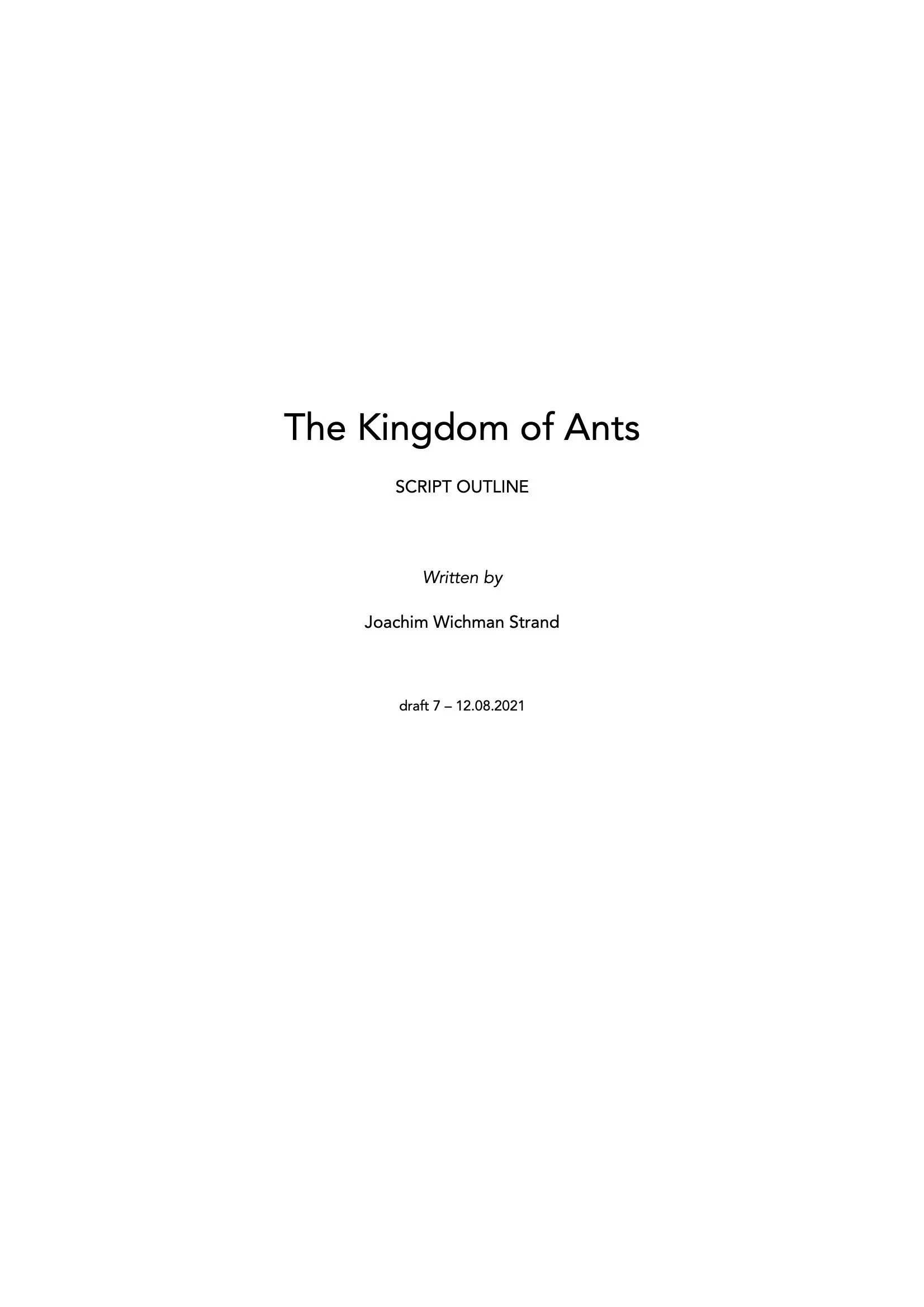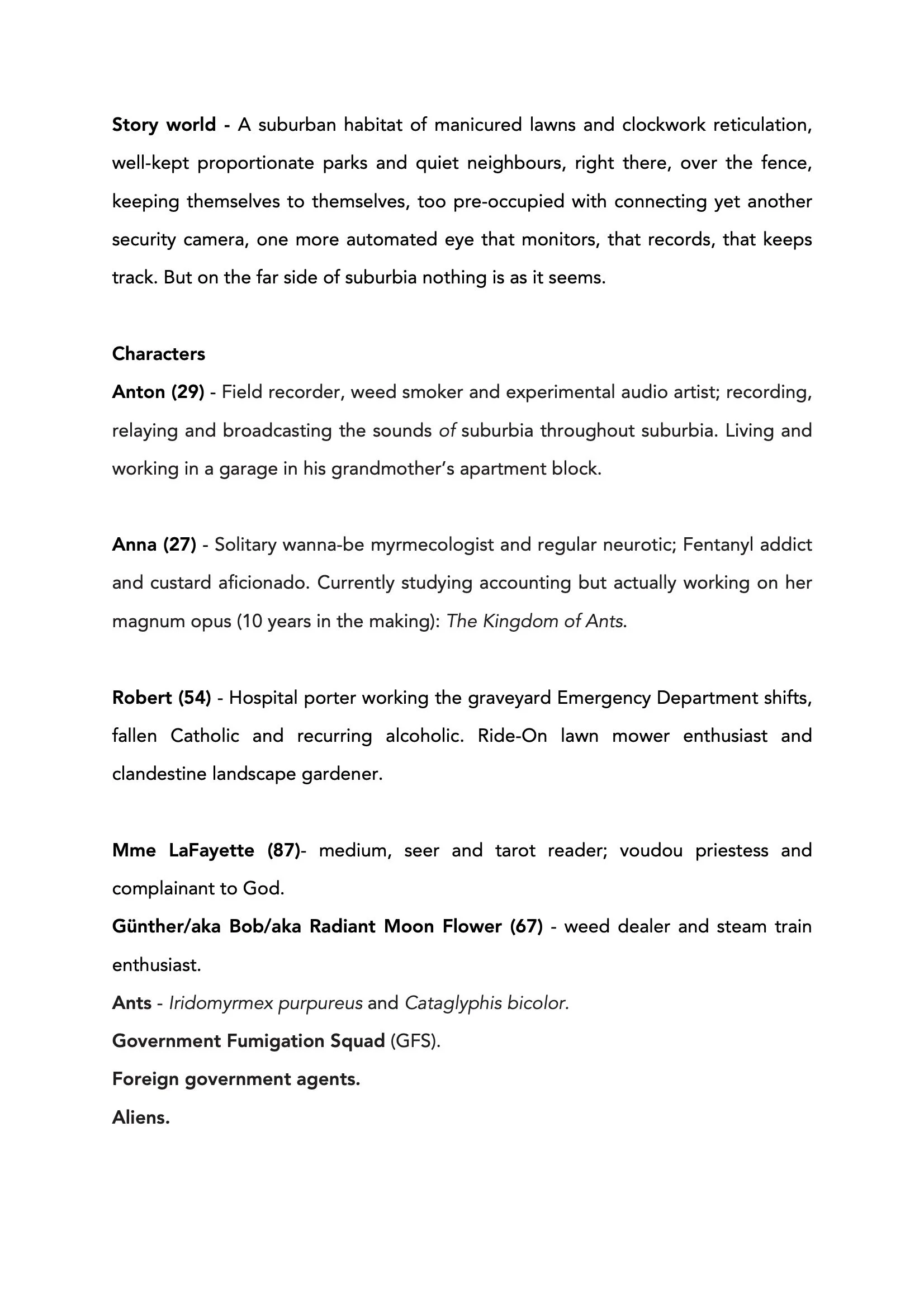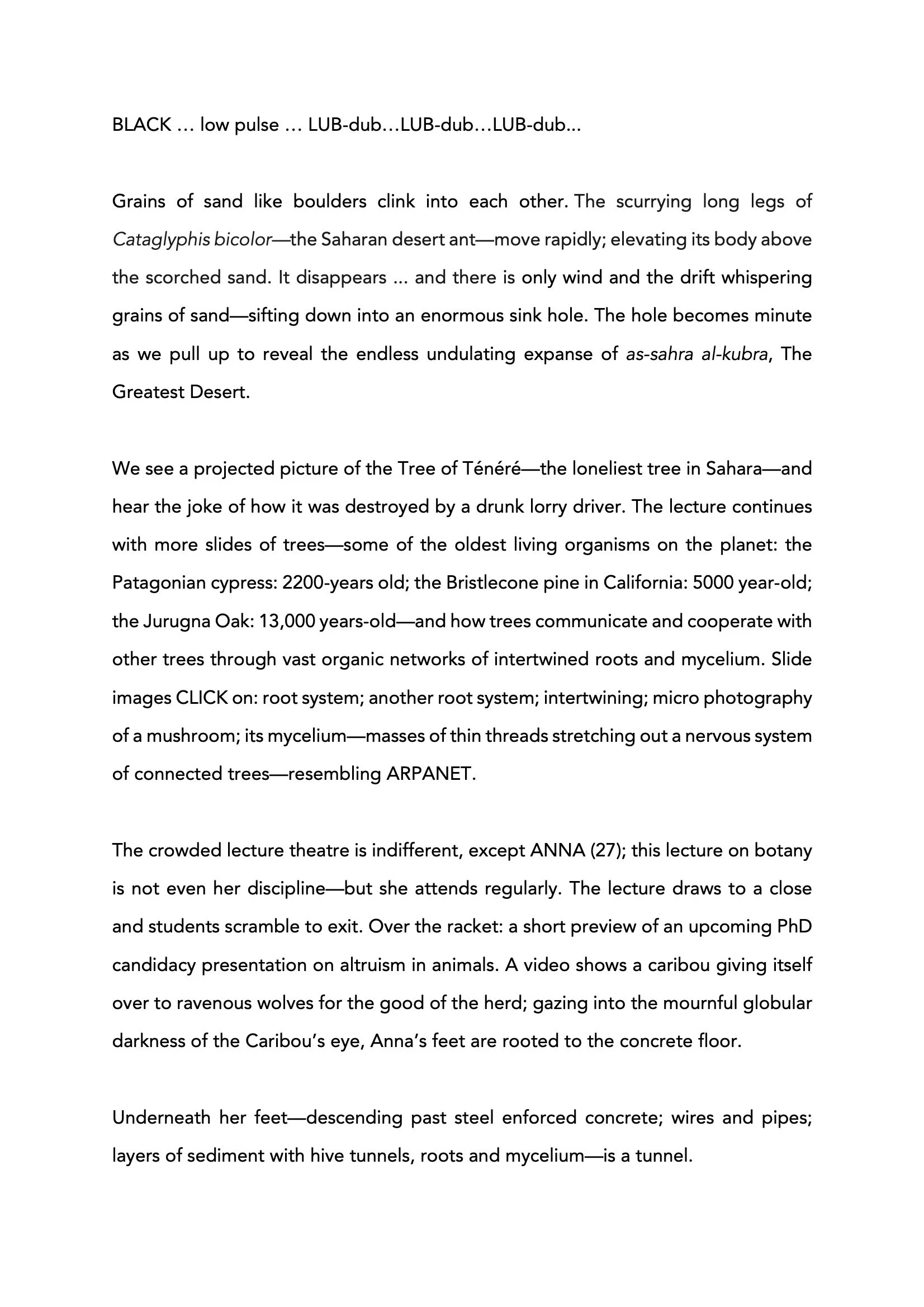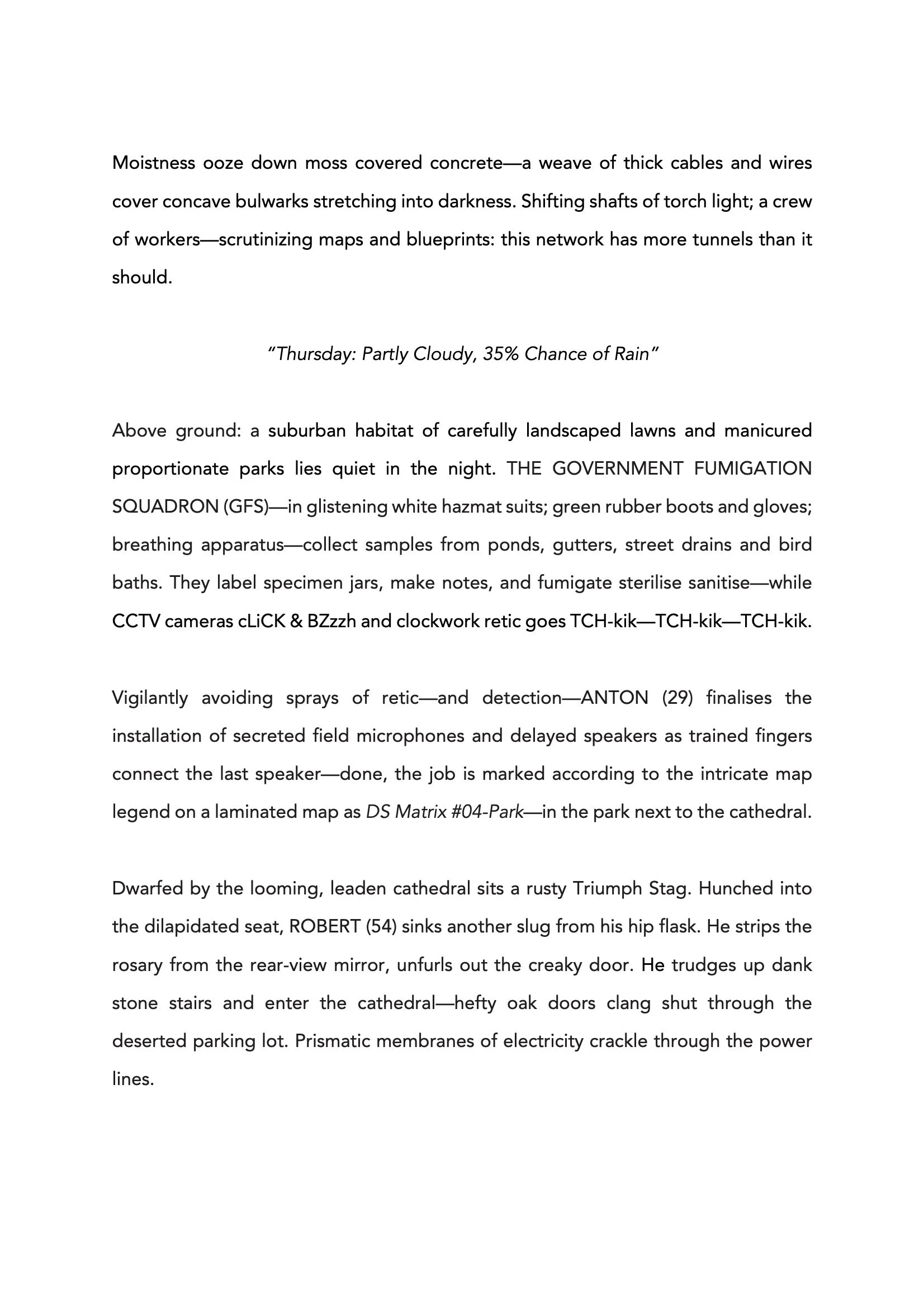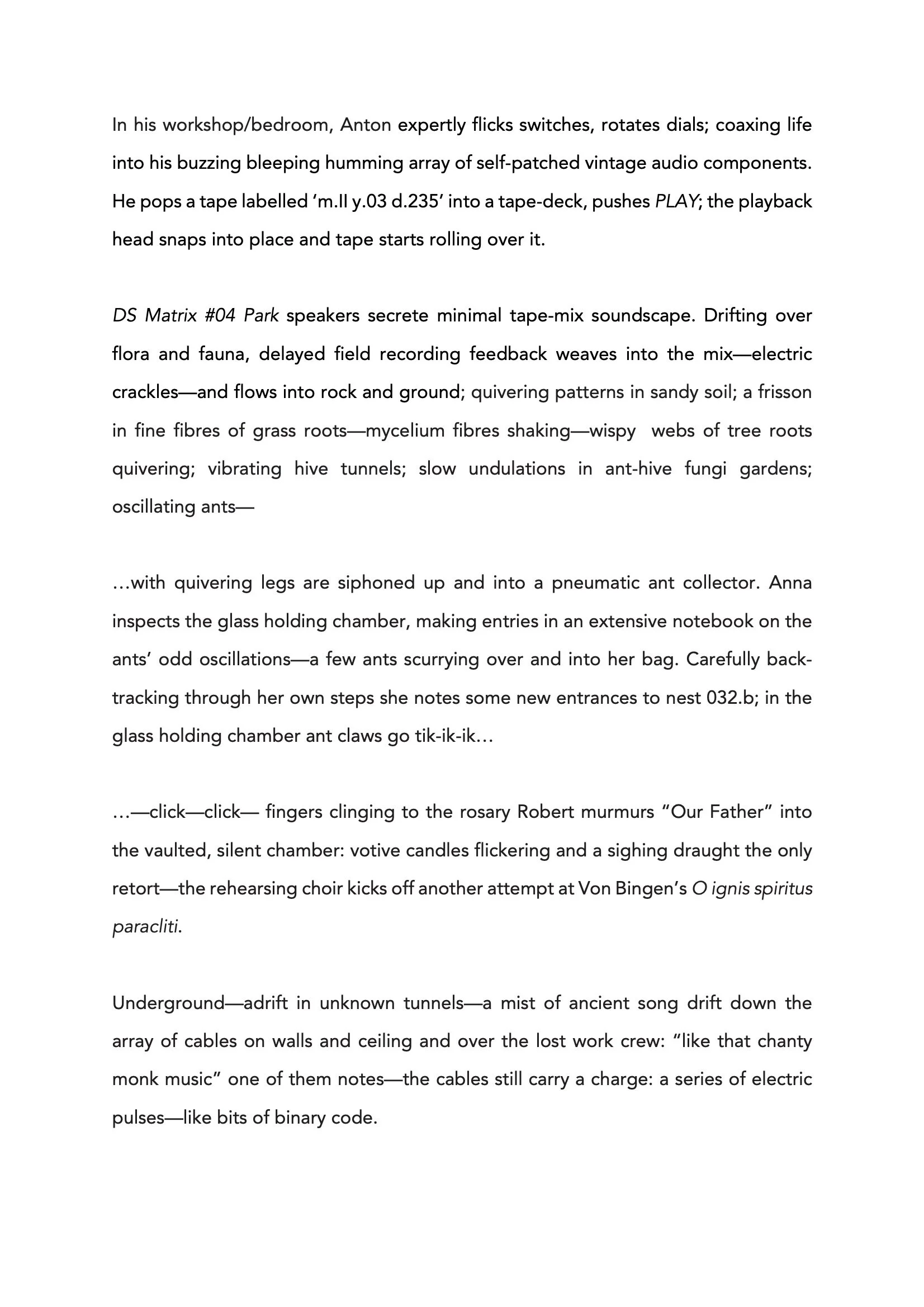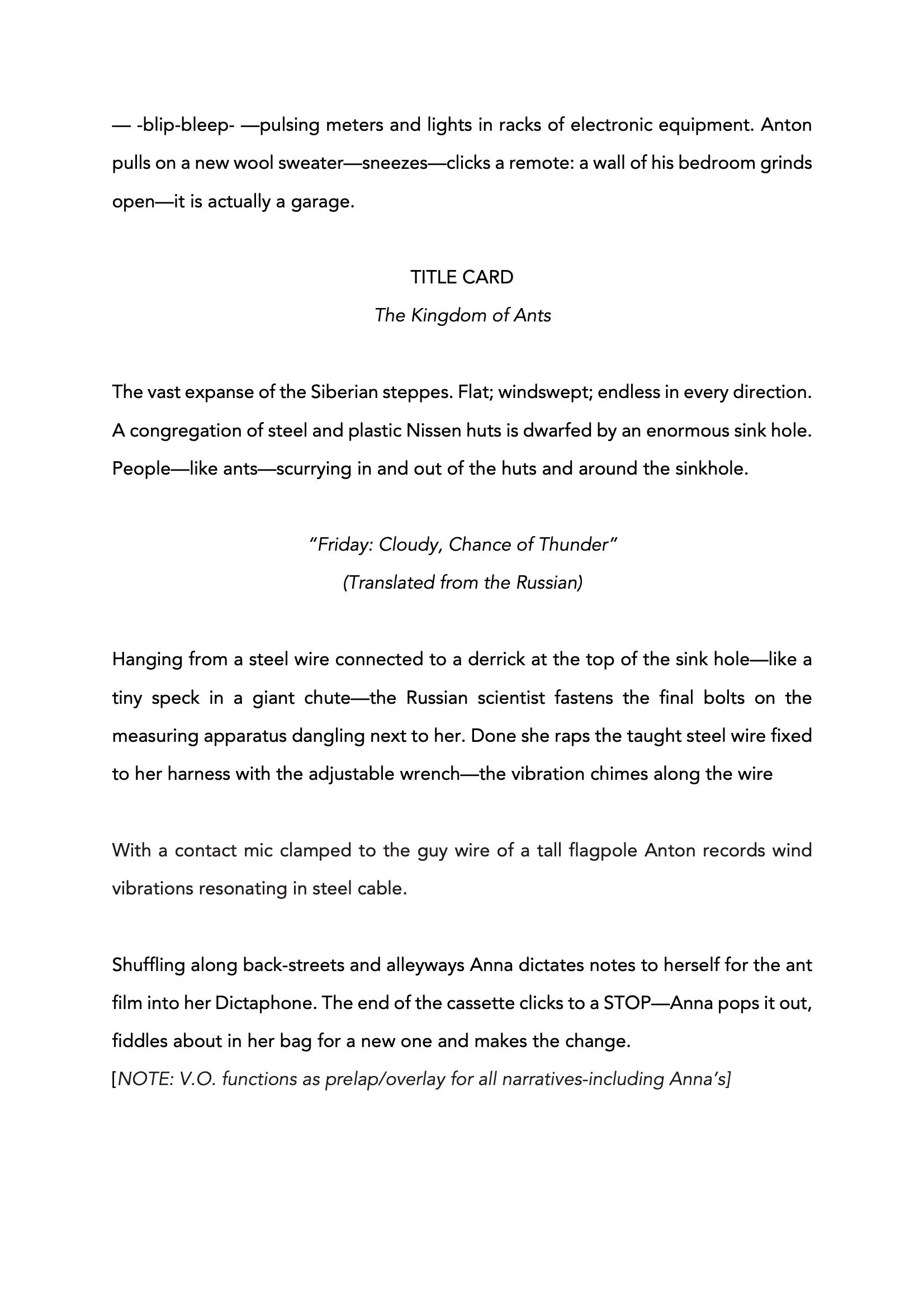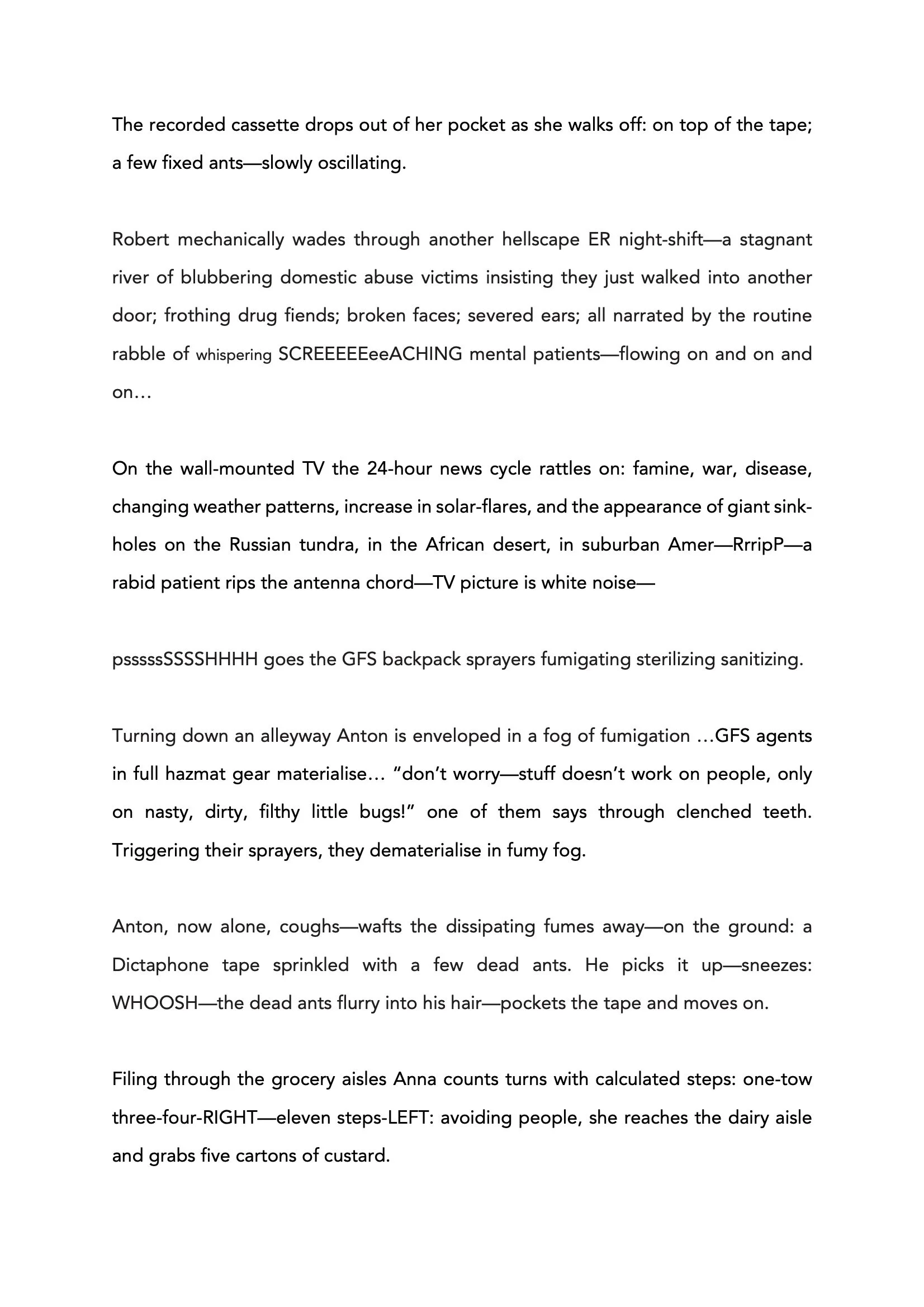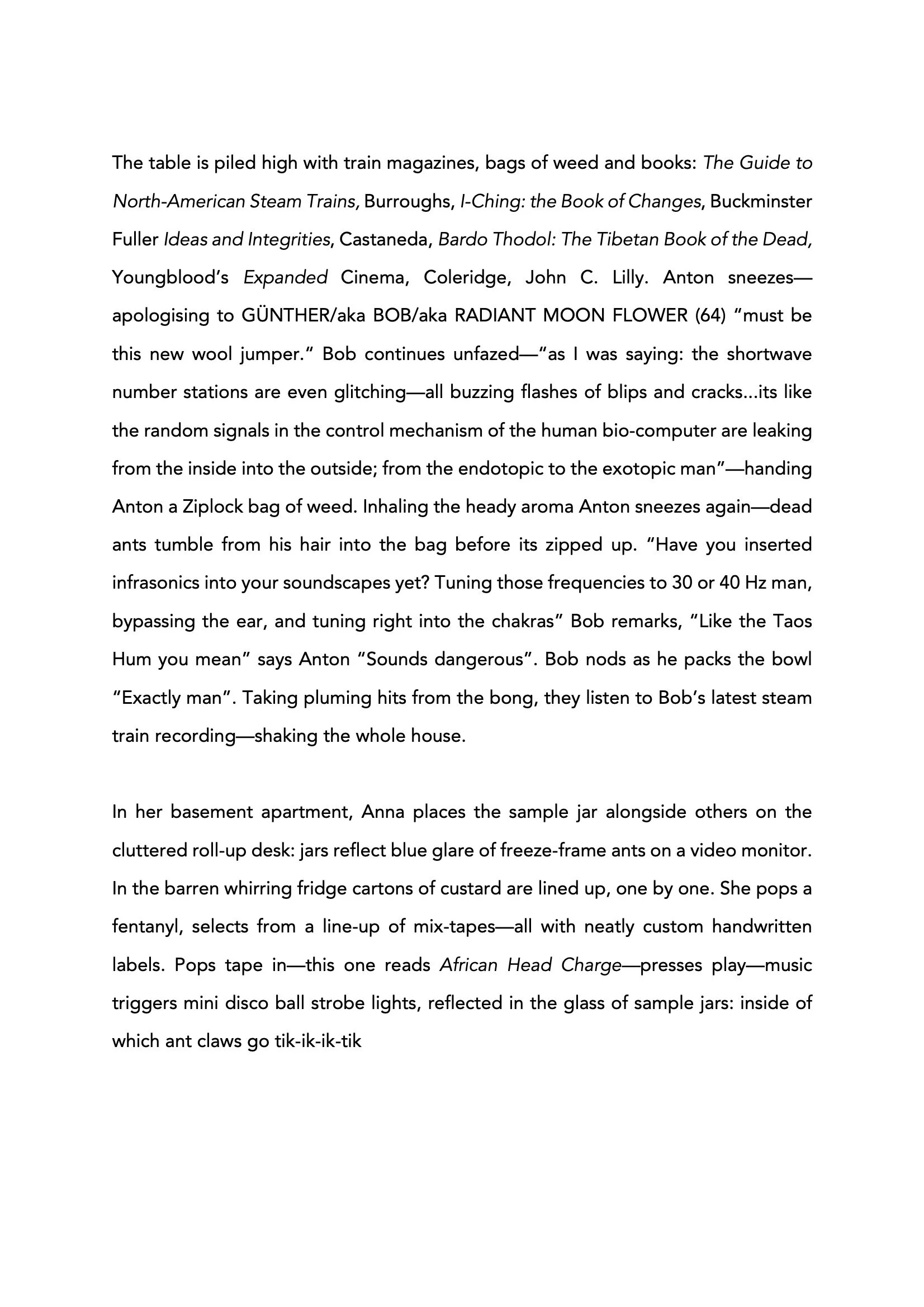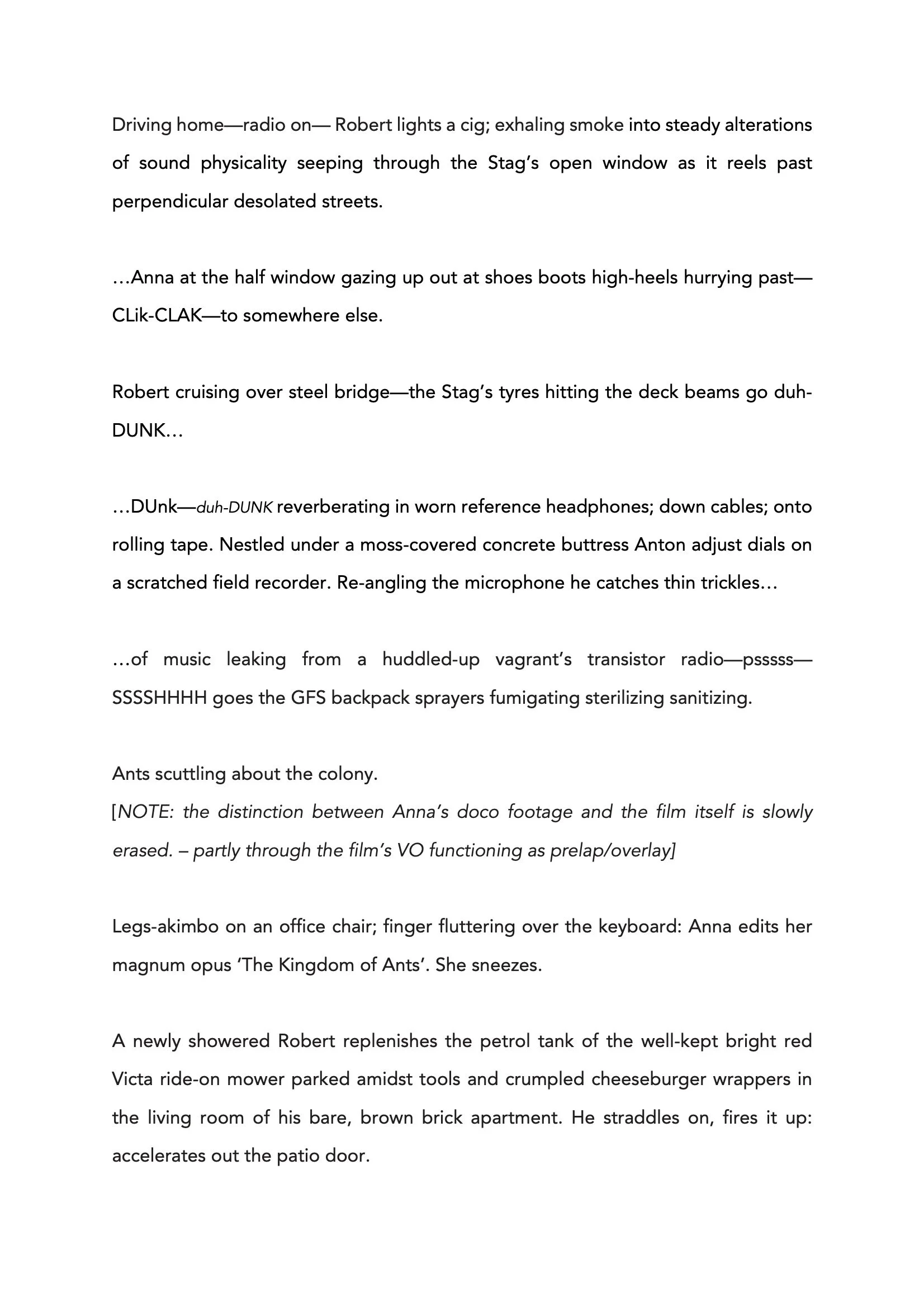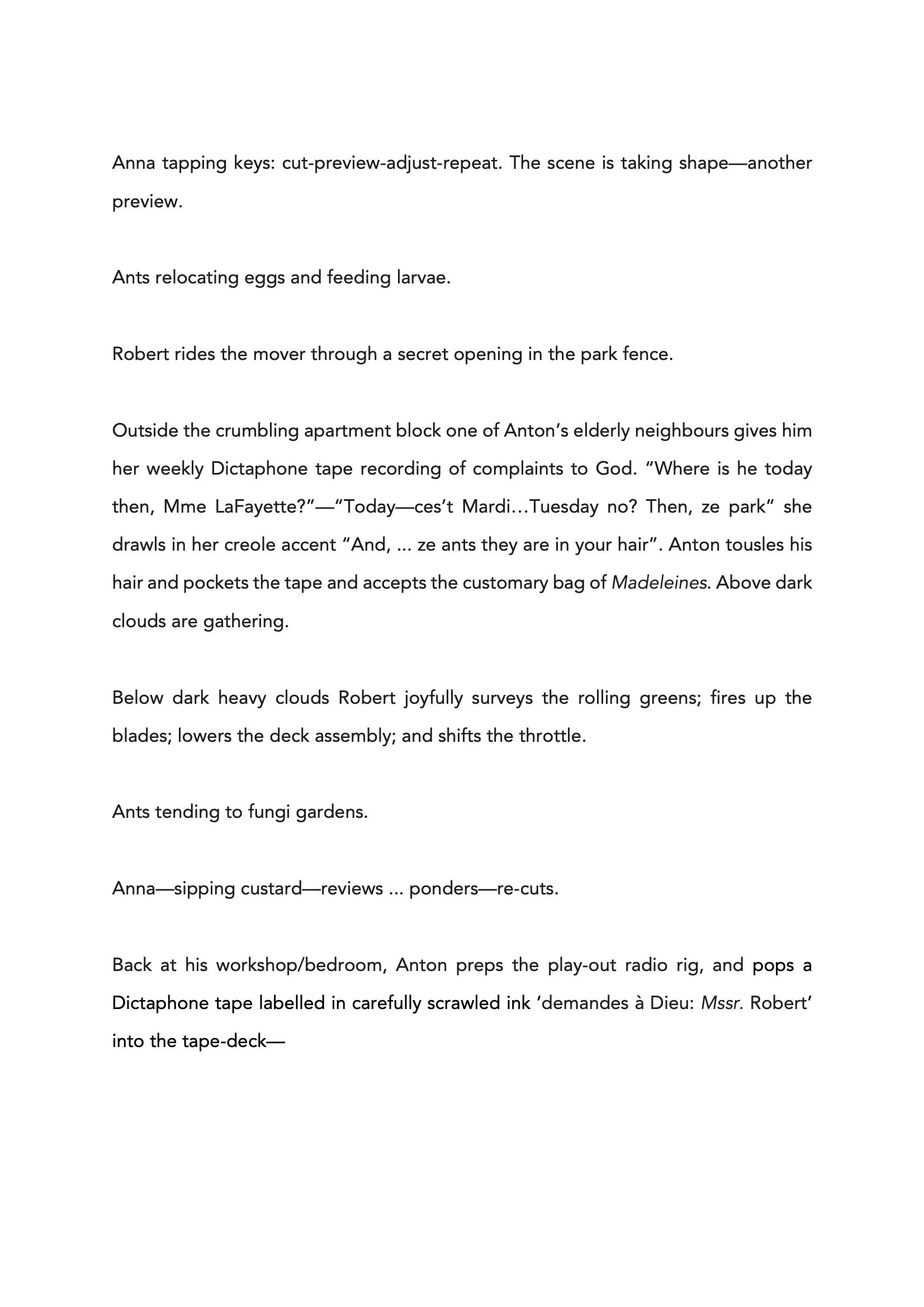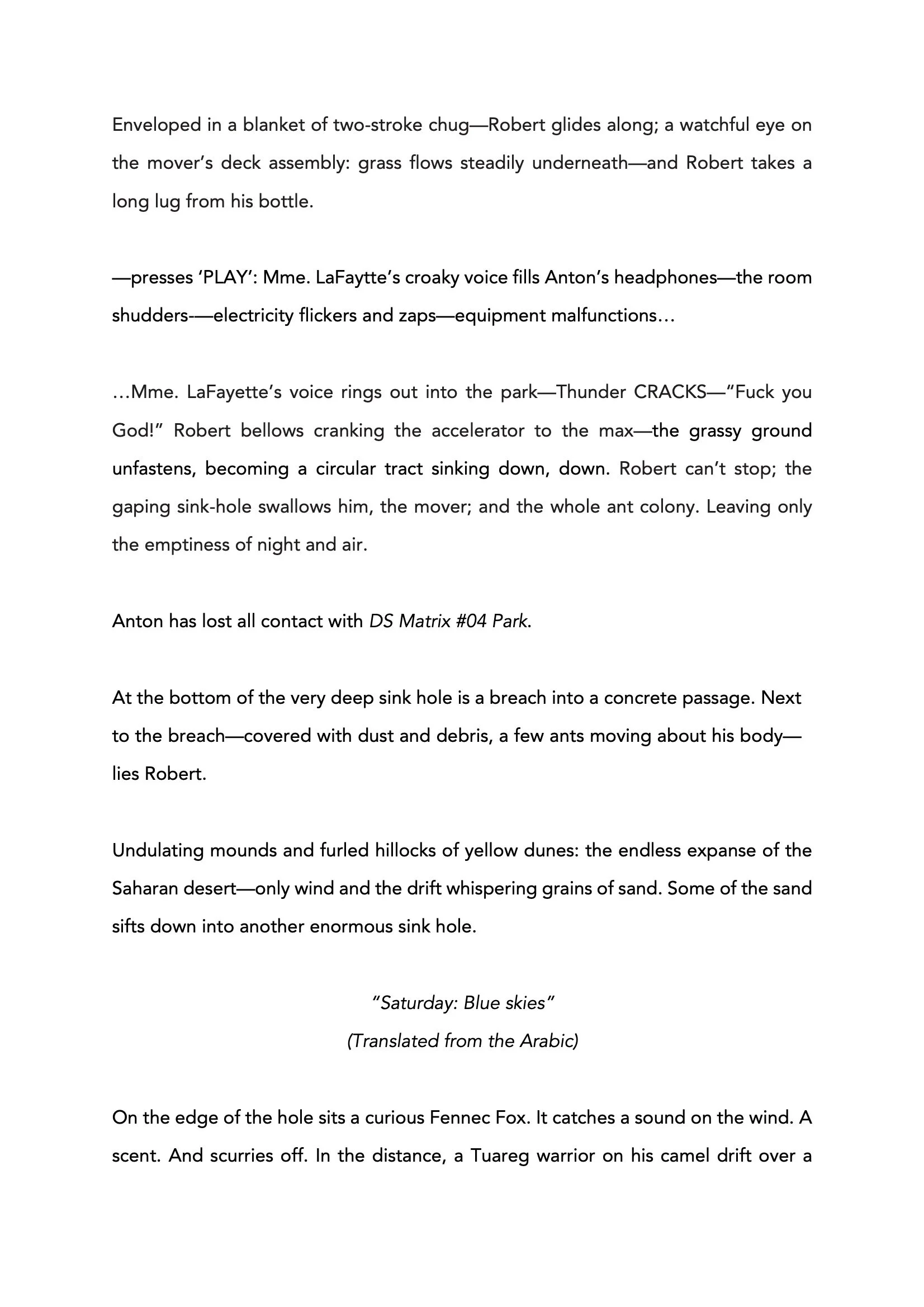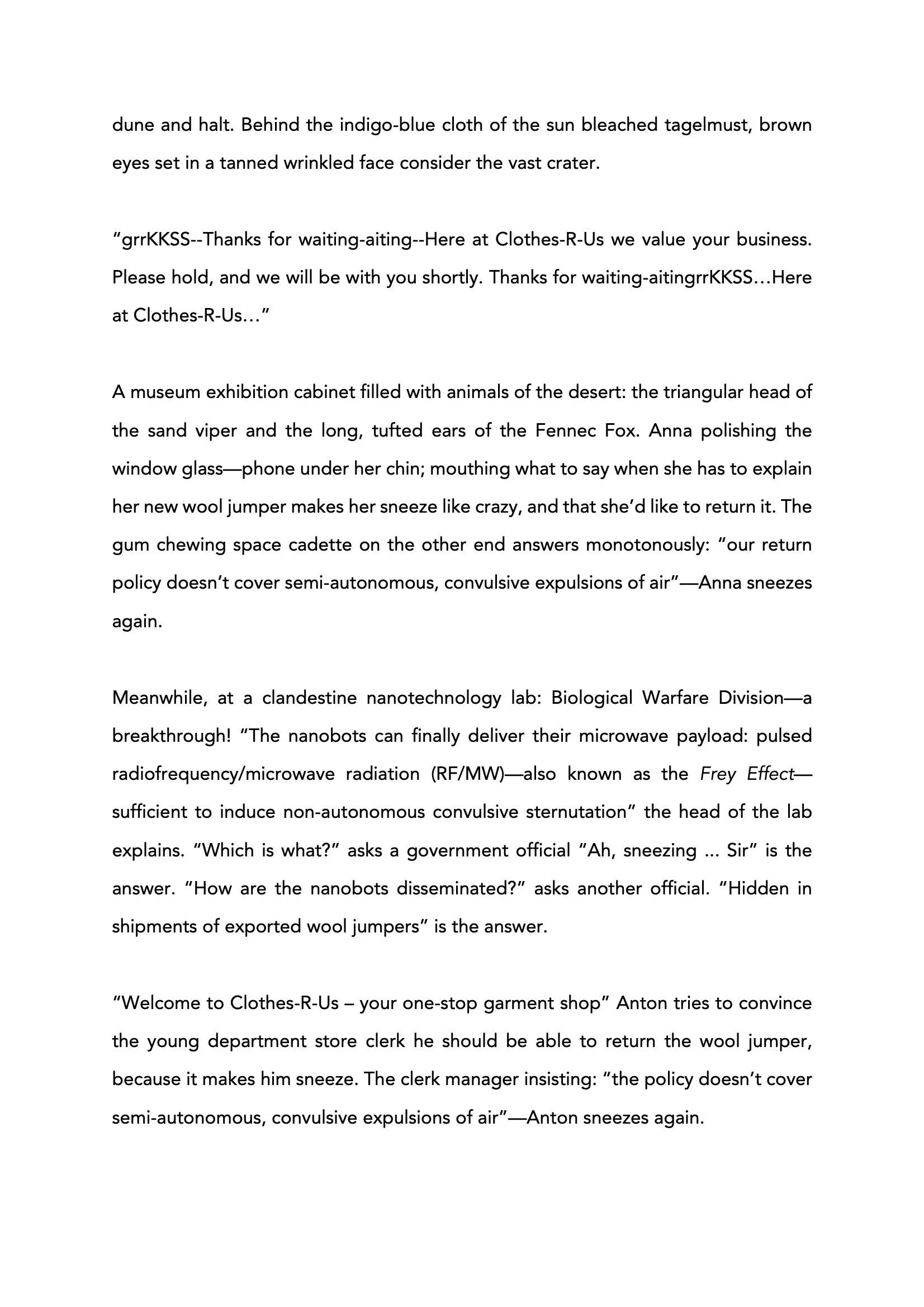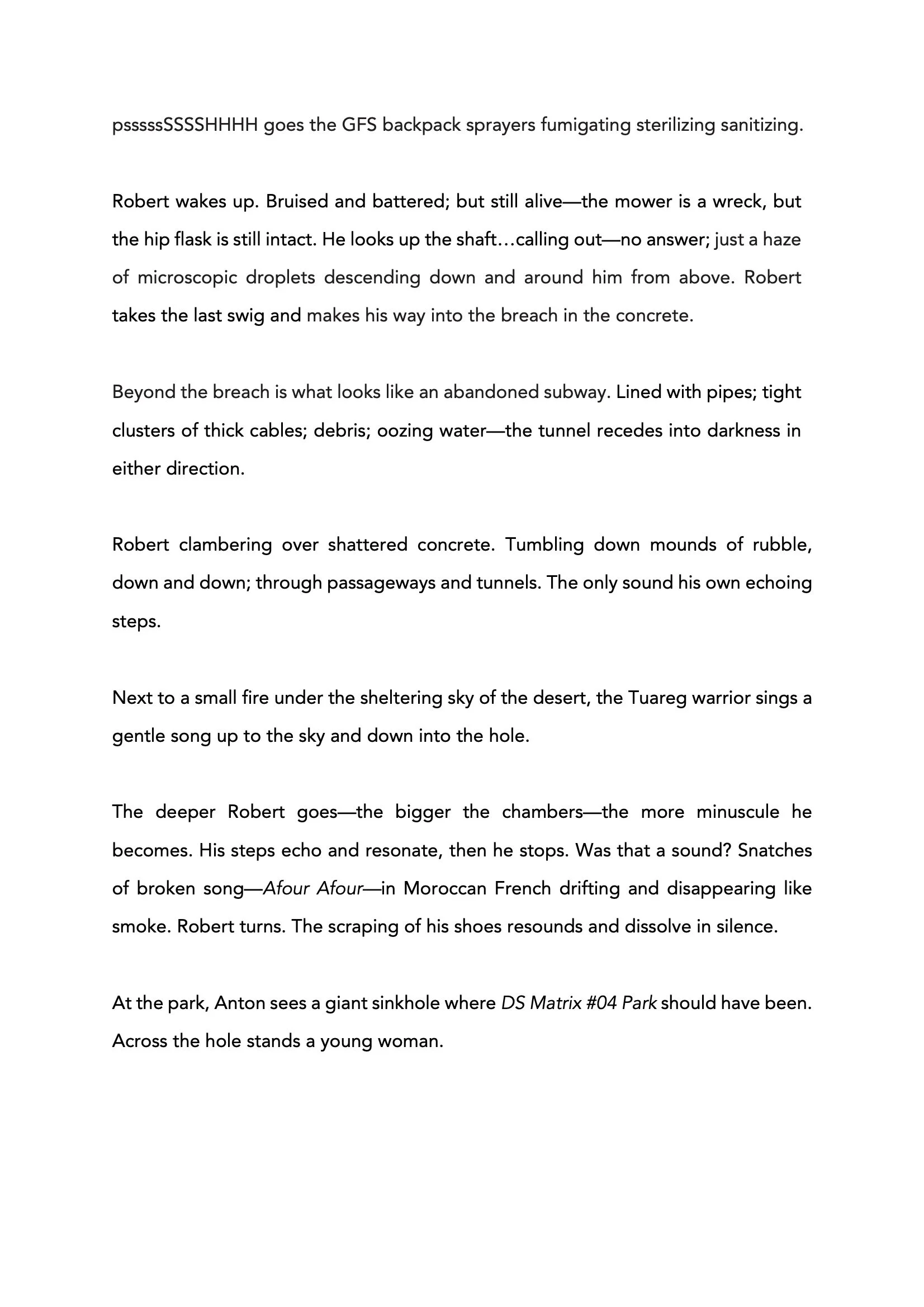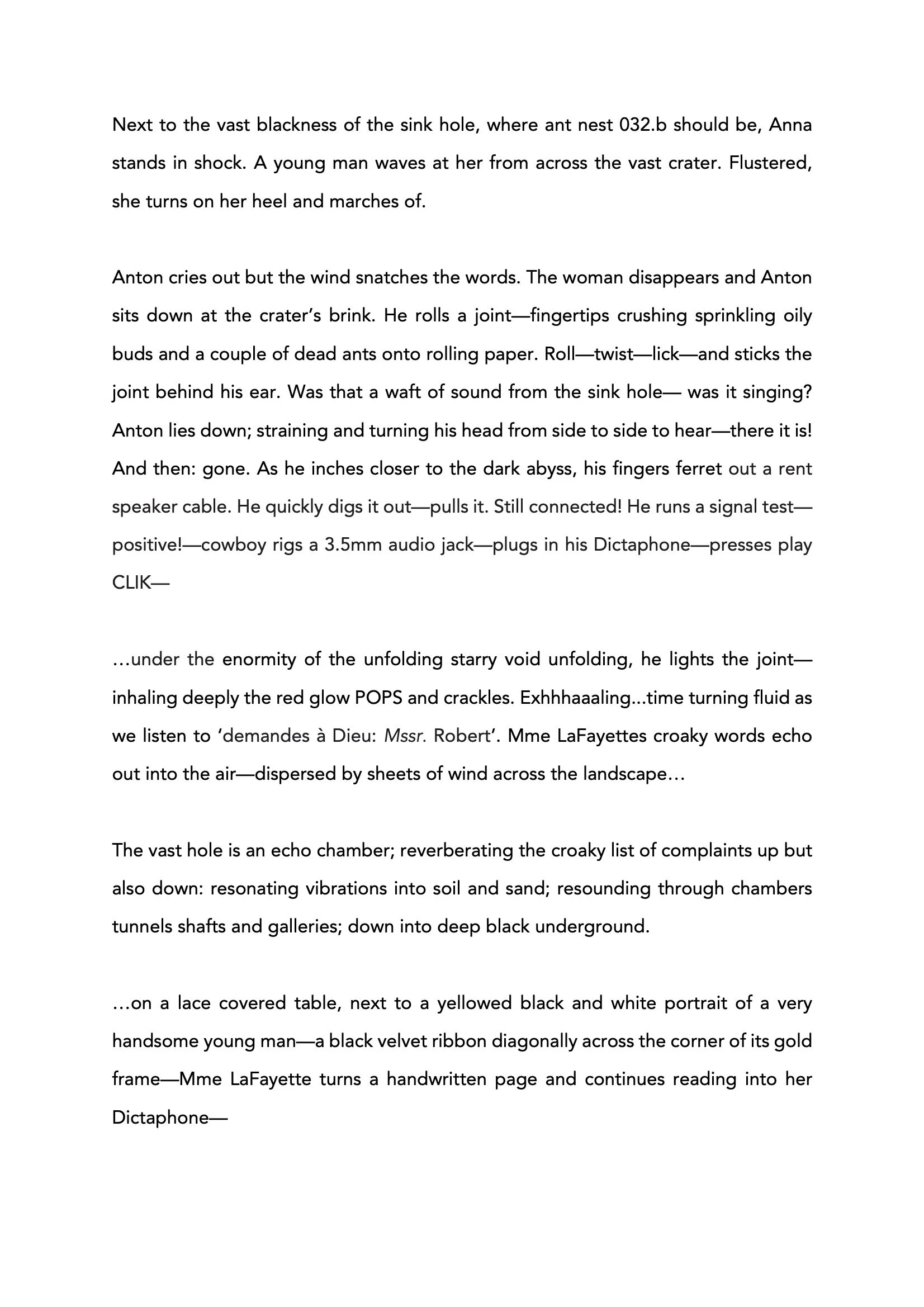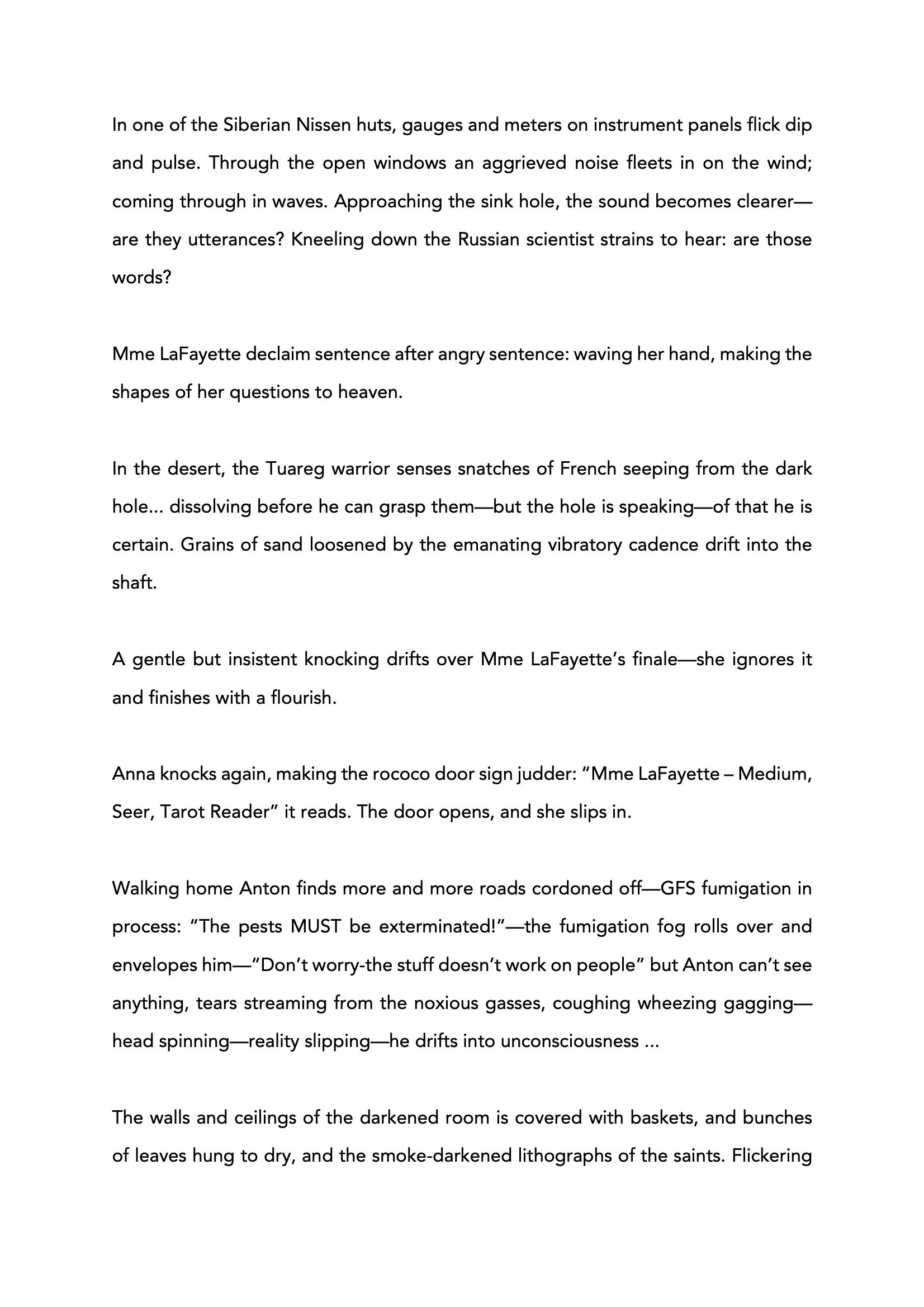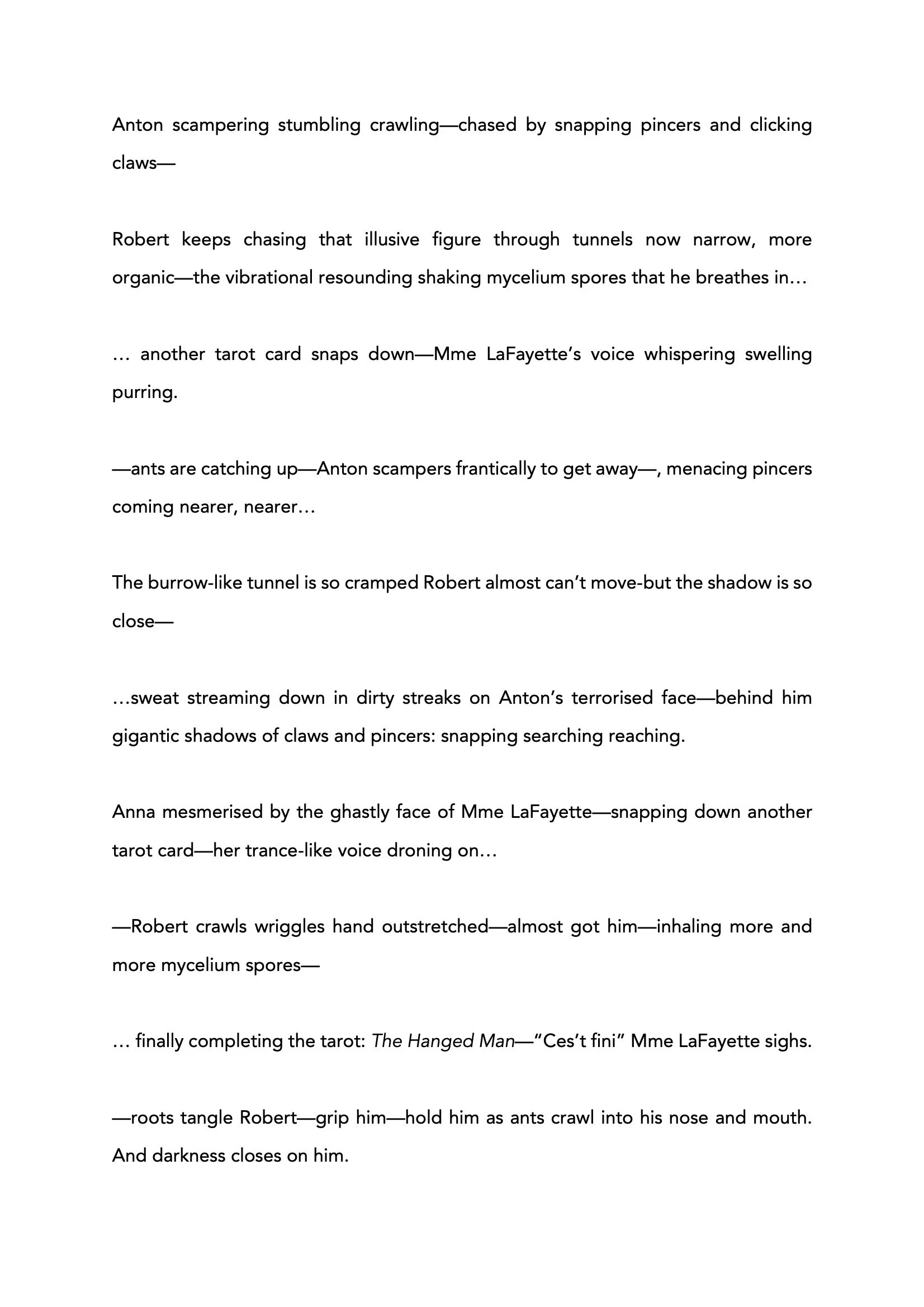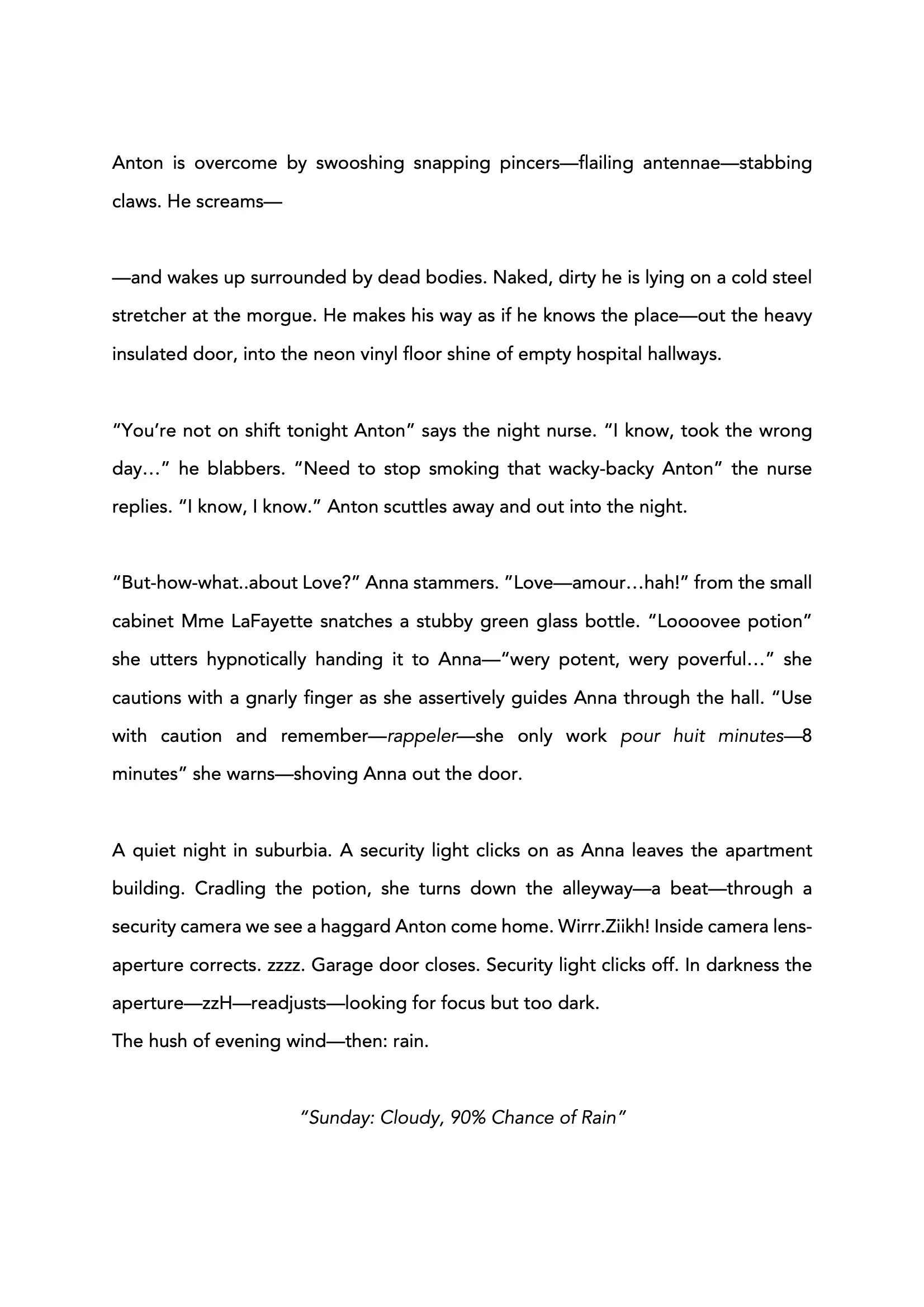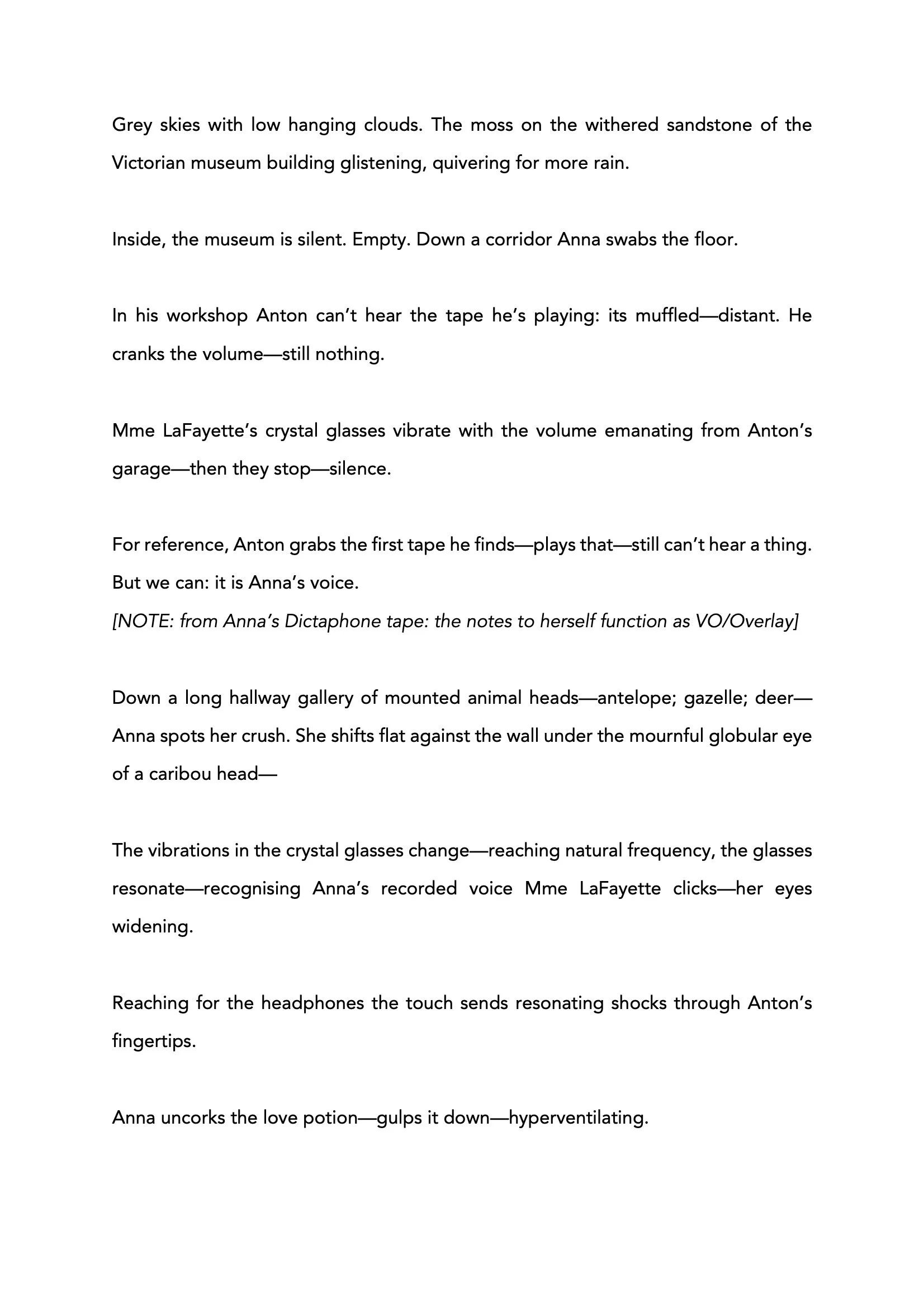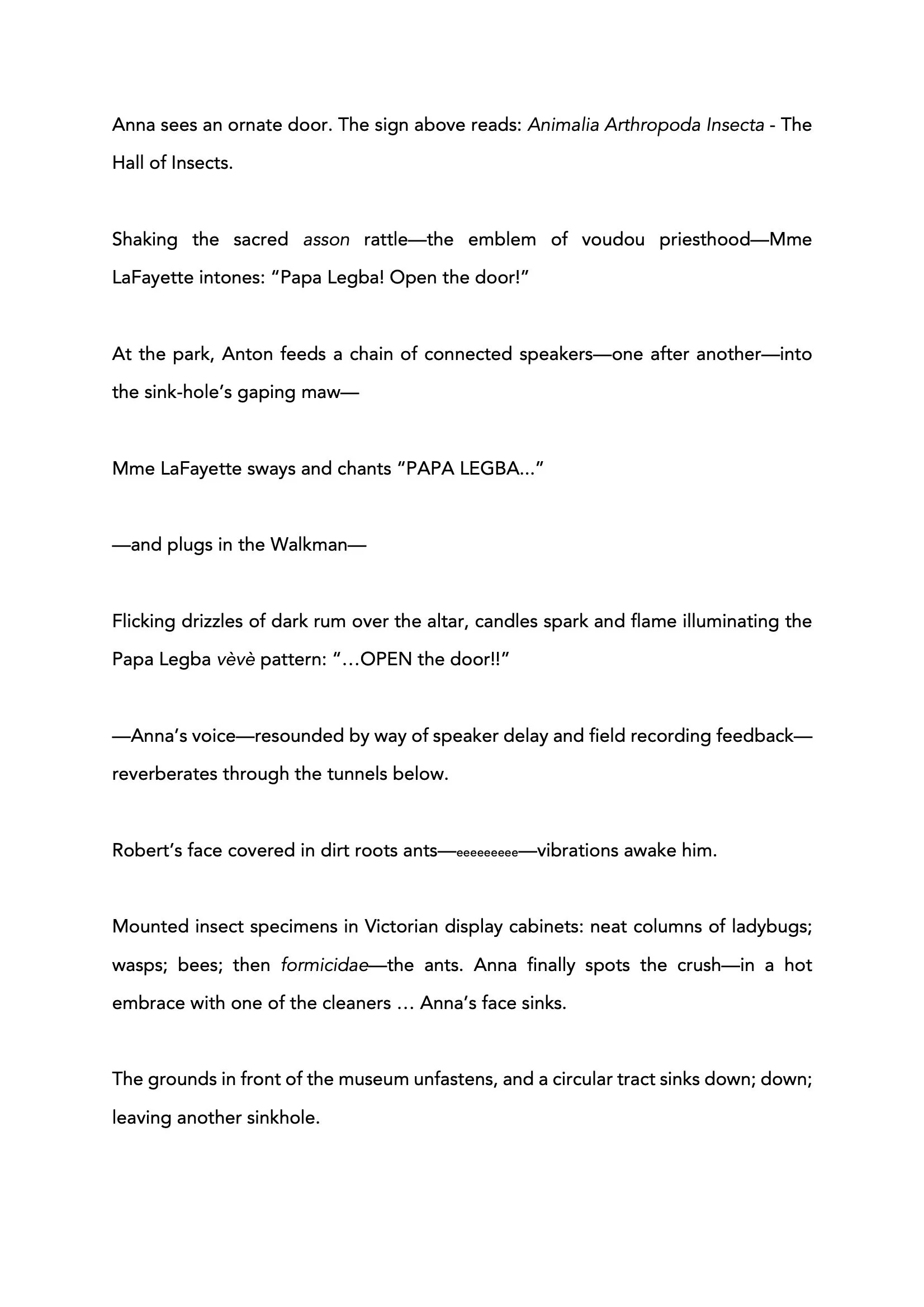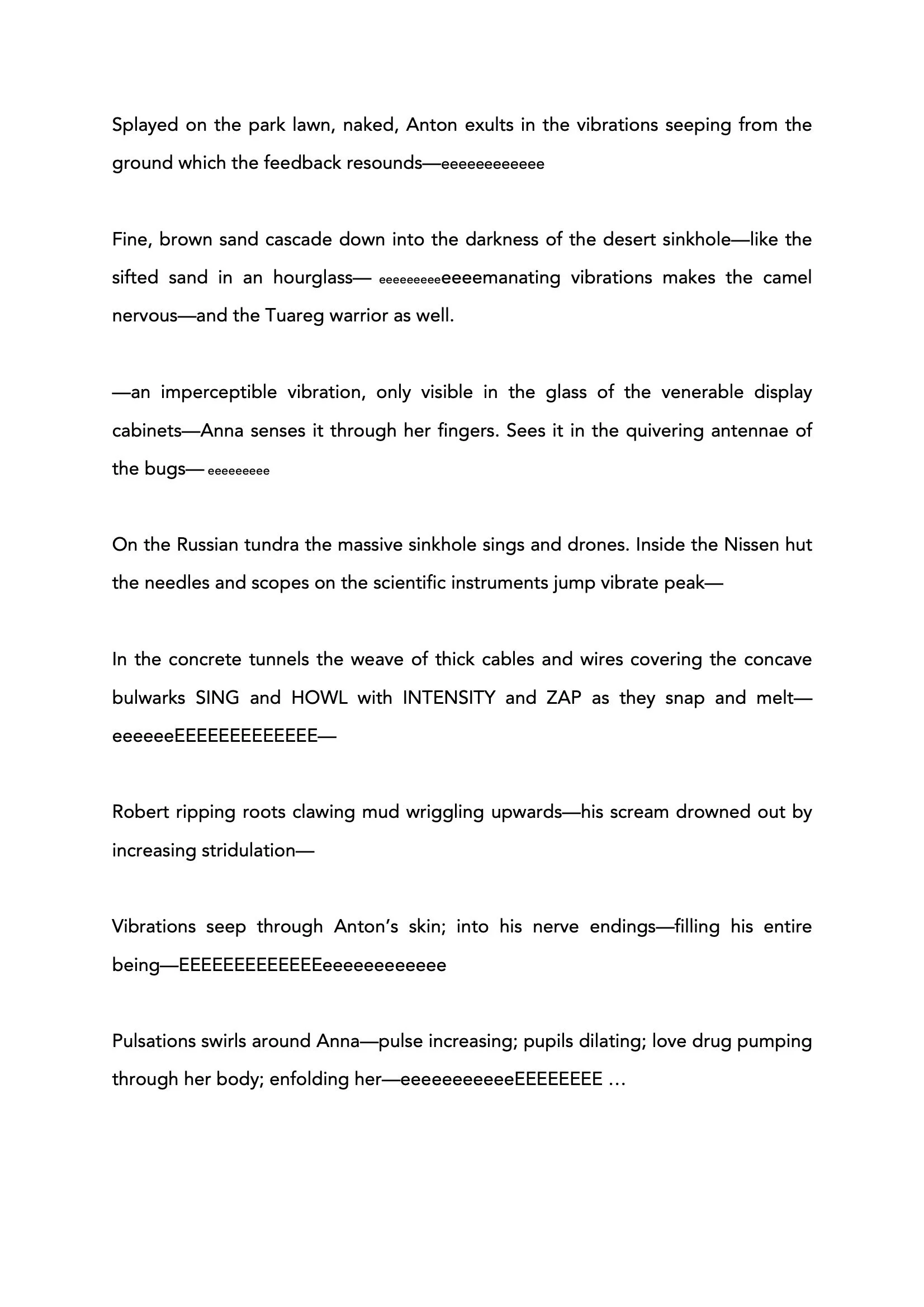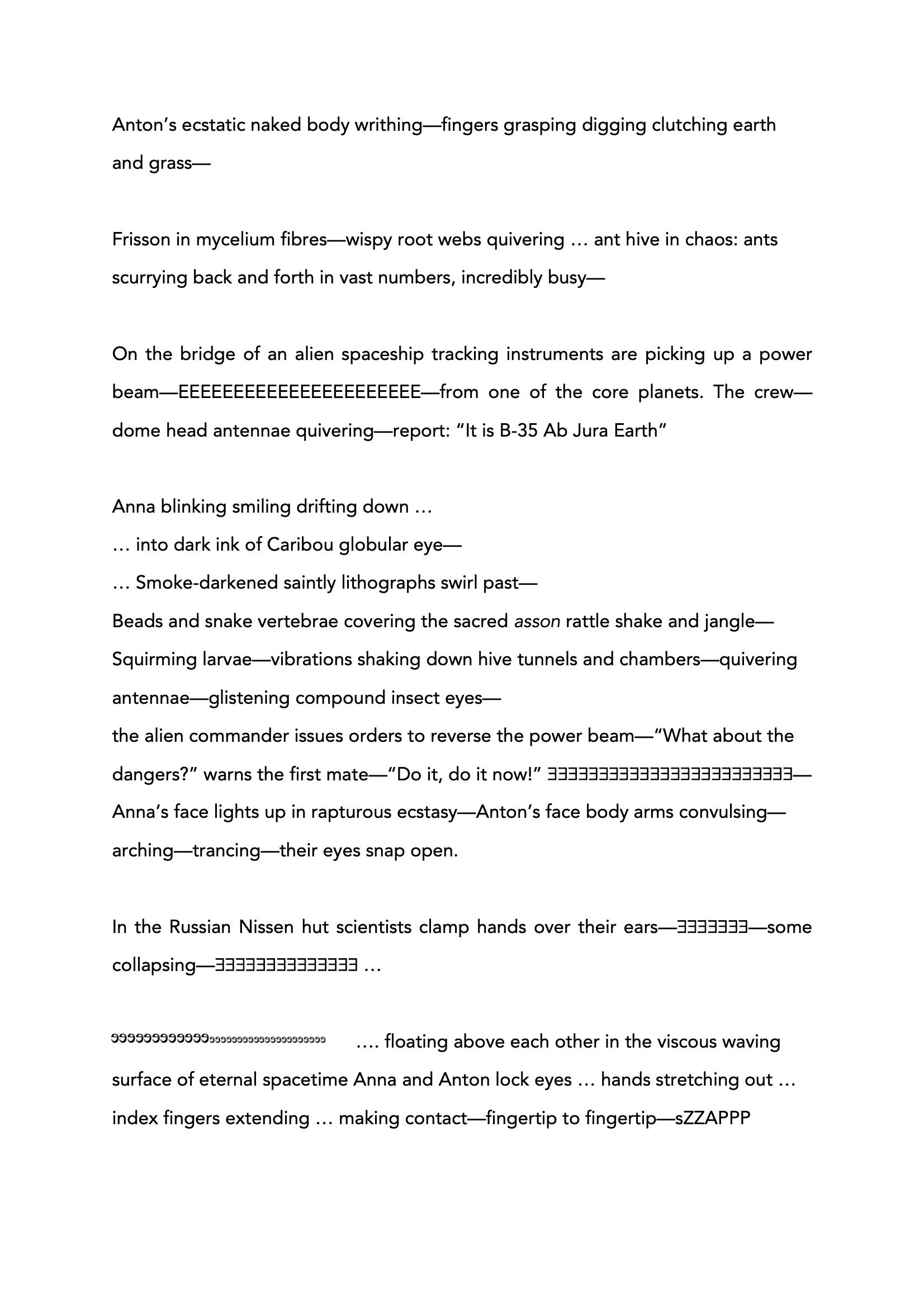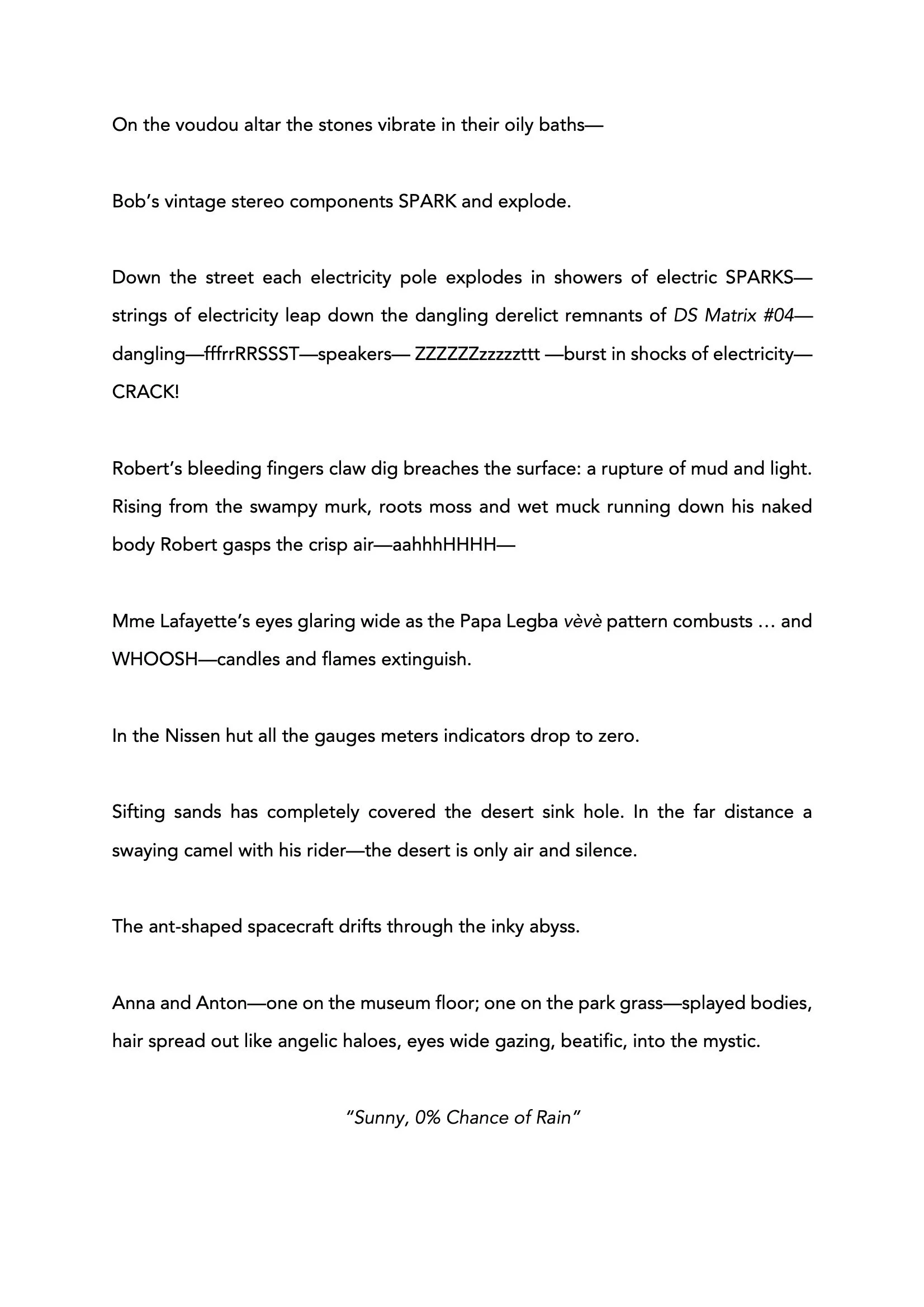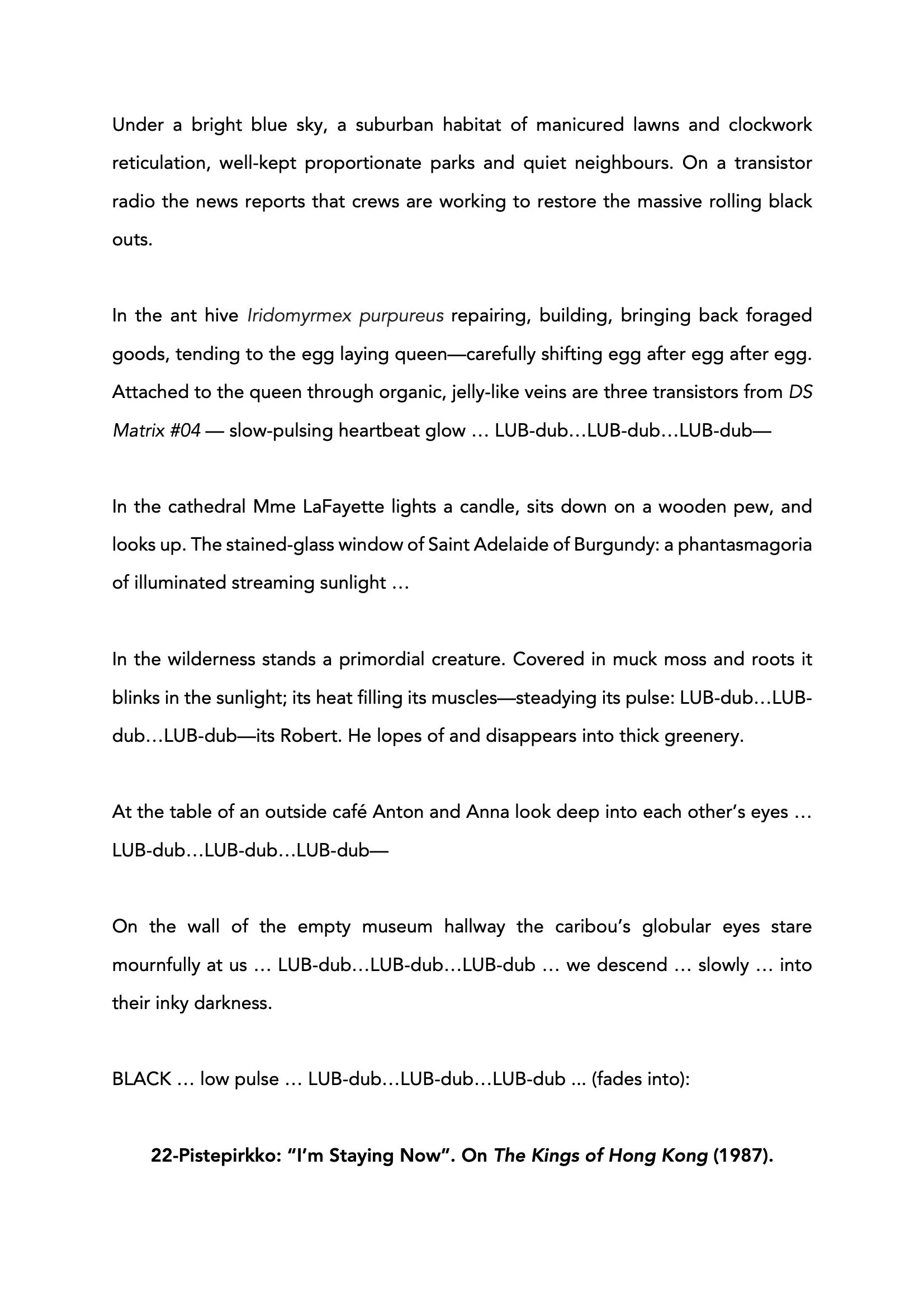I have always been fascinated by the aesthetic and synaestheic linkages (or cinestethics as Vivian Sobchack calls this relationship) between audio and the moving image in cinema and, specifically, in music videos. But in my PhD, I look at how the written form of the cinematic screenplay can be utilised to represent the soundscape through the literary form.
The screenplay is a written “monstration” of the filmic event yet-to-be-made. The words, and phrases selected, and sentences formed and structured by the screenwriter through punctuation, syntax and resourceful application of literary devices reveal and substantiate the people (=characters: age/look/demeanour), and their relationships (=dialogue: interactions/sympathy and empathy/hopes, wants and needs), the places (location, setting, and deixis), and the times (period, phase and chronology/time and temporality) and, finally, the occurrences in and through which these people interact with the places and each other (story and plot). This narrative “monstration”, if deemed worthy of ascension, will then be remediated through film semiosis by the hands and processes of cinematic technicians using the audiovisual mode into qualified film media. As such, the screenplay operates in a liminal space between semantics and pragmatics, between creativity and structure, between artefact and dissolution, between the written word and the moving image.
The para-cinematic qualities required by the screenplay text can be said to be identical in features to what Bellardi, in his article on cinematic novels, calls “cinematic writing”. This form of writing, in its attempt to imitate cinema, will display such repeated and stereotypical features as “present-tense narration, the montage in general, a ‘certain’ visual quality” as well as “the camera-eye narratorial situation” and, in some instances, direct and specific cinematic techniques such as “travelling, pans, and zooms” (Bellardi, 2018, p.25). The thing to note is the focus on the visual properties, the need to write with a “certain visual quality” (ibid.).
The dominance of the ocular is of course nothing new. The discussion and understanding of cinema, both in the vernacular, and in cinema research in general is and has been weighted and focussed on its visual properties, as is our understanding of the screenplay. We go to “the pictures” to “see” a film and screenwriters, deemed to be “visual poets” are admonished to “write in pictures” to “describe what we see”, to “show and not tell”. The issue of course, is that cinema is not simply images in a temporally structured flow, not just a visual experience—cinema is audio-vision, sound and moving images running side-by-side simultaneously and synchronised, providing a multi-modal narrative encounter. In terms of the screenplay as the written “monstration”, this raises a pertinent question: since the screenplay should ‘show’ the film, should it not then also let us ‘hear’ the film? Wouldn’t it be artistically and narratively beneficial to reveal and substantiate the aural constituents of the people, places and occurrences that are to be remediated?
The answer to this, I think, is ‘yes’ but going through available literature one would think not. And this is what I want to explore in my PhD, and through the creative practice of writing a feature length screenplay. The writing of audio is achieved through the use of onomatopoeia; the direct formulation of sound through what I call ‘exaggerated’ writing - for example adding extra letters (“Exhhhaaaaale”) or mixing capital and non-capital letters (“eeeeeeEEEEEEE”): a type of writing often utilised in comics - or differentiating font sizes; through punctuation (semicolon, en-dash and em-dash, and the ellipsis) and through alliteration, phonosemtantics - or sound symbolism as it is also called - and metaphor.
To further aid the reading of the script outline, I have put together a temp soundtrack (YouTube Playlist below) comprising ‘music’ that relate thematically to the scripts main character Anton - a field recorder and experimental sound artist - as well as tracks that features directly in the diegesis (see track list below).
The Kingdom of Ants - Script Outline
Track List:
Lotus Eaters. (2002). Untitled 3 [Song]. On Mind Control for Infants.
Pink Floyd. (1969). Astronomy Domine [Song]. On Ummagumma.
African Head Charge. (1991). Elastic Dance [Song]. On My Life in a Hole in the Ground.
Aethenor. (2006). I [Song]. On Deep in Ocean Sunk the Lamp of Light.
Taj Mahal Travellers: “Side A Excerpt” August 1974 (1974).
Ahab. (2001). Of the Monstrous Picture of Whales [Song]. On The Call of the Wretched Sea.
Tinariwen. (2004). Afour Afour [Song]. On The Radio Tisdas Sessions.
Taj Mahal Travellers: “Side D Excerpt” August 1974 (1974)
Mountains. (2011). Live at the Triple Door [Song]. On Air Museum.
Sunn O))) & Ulver. (2104). Western Horn [Song]. On Terrestrials.
Hedningarna: Skamgrepet [Remix] (2018)
Alice Coltrane. (1972). Andromeda’s Suffering [Song]. On Lord of Lords.
22-Pistepirkko. (1987). I’m Staying Now [Song]. OnThe Kings of Hong Kong.

